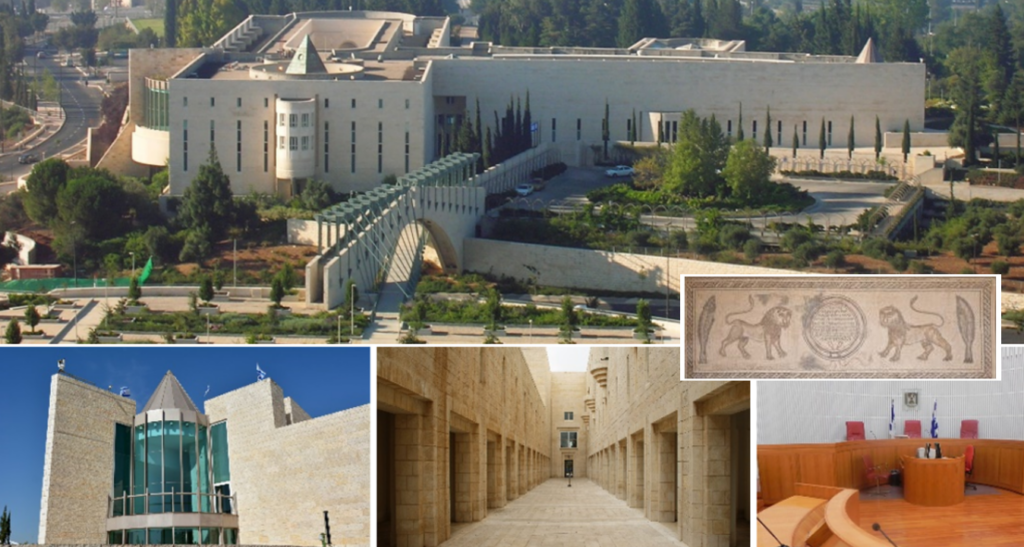
Pekudei (פקודי – Inventories), Exodus 38:21–40:38. Linked together(1), Vayakhel and Pekudei describe the entire process of constructing the Tabernacle. The separation of these two parshiot is perceived as a sign of discord.
Exodus 38:21
אֵלֶּה פְקוּדֵי הַמִּשְׁכָּן מִשְׁכַּן הָעֵדֻת, הַכֹּהֵן.
This is the inventory of the Tabernacle, residence of the Tablets of the Covenant (2).
An object of contention, the Supreme Court’s primary role is to verify the constitutionality (3) of laws and government decisions.
It is located in the building designed by architects Ram Karmi and Ada Karmi-Melamede (4). This building incorporates elements of Israel’s religious and cultural heritage, notably the lions of the Hamat Gader Synagogue. A long straight path connects the Supreme Court to the Knesset.
(1) If Passover falls on a Sunday or if the year is embolismic (13 months), Vayakhel and Pekudei are not linked.
(2) Tablets of the Covenant: The word הָעֵדֻת (HaEdut), meaning testimony or covenant, refers to the Tablets of the Covenant kept inside the Ark of the Covenant.
(3) Israel does not have a constitution. Disagreements have prevented the development of a Constitution, although the Declaration of Independence provided for a Constituent Assembly for this purpose. The Knesset has chosen a progressive approach by enacting a series of Basic Laws, each having constitutional status and only revocable by an absolute majority vote. A committee has been working for several years on its development.
(4) Ram Karmi (1931-2013) and Ada Karmi-Melamede (born in 1936), two Israeli architects, are the children of architect Dov Karmi (1905-1962). All three were awarded the Israel Prize in Architecture (Dov in 1957, Ram in 2002, and Ada in 2007).